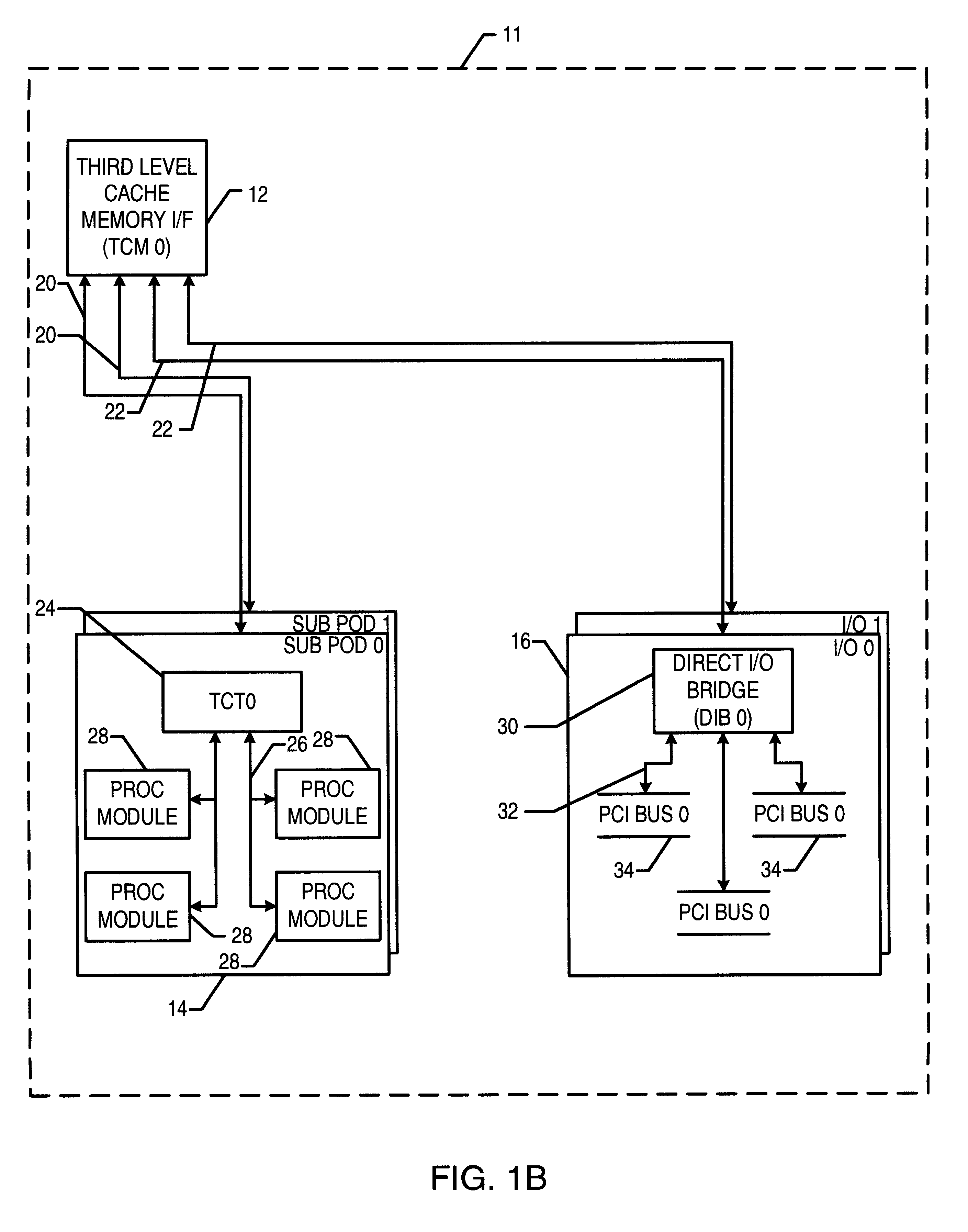Source synchronous transfer scheme for a high speed memory interface
a memory interface and synchronous transfer technology, applied in logic circuit coupling/interface arrangement, generating/distributing signals, instruments, etc., can solve the problems of reducing the band pass of a system, affecting the band pass of the entire computer system, and limiting data transfer rates
- Summary
- Abstract
- Description
- Claims
- Application Information
AI Technical Summary
Benefits of technology
Problems solved by technology
Method used
Image
Examples
Embodiment Construction
=L (element 235) and DIB MODE=H (element 237)) for either the DIB interface at a 100 Mhz data rate or for the Cluster interface at a 200 Mhz data rate. FIG. 7 shows the TCM conditioned for the DIB interface. In general, the TCM 221 which cycles at twice the rate of the DIB 223 transmits data 202 on the bus 219 ever TCM TC2 (FIG. 8, element 259). The even data is transmitted on the TCM TC2_A and the odd data is transmitted on the TCM TC2_B. The data 200 is the same as data 202 and is re-clocked into the source phase latch (FIG. 5, element 105) with TCM TC4 (FIG. 8, 263) in order to match the clock rate of the DIB which is half that of the TCM.
In FIG. 7, data groups 200 and 202 (same data) are passed on to the input of source phase latch 205. When source phase latch 205 is clocked, the multiplexed even / odd data group signal 219 is concurrently transmitted to the receiving DIB ASIC 223 on the data bus along with two strobe signals (master 204 and slave 206), which have low skew with re...
PUM
 Login to View More
Login to View More Abstract
Description
Claims
Application Information
 Login to View More
Login to View More - R&D
- Intellectual Property
- Life Sciences
- Materials
- Tech Scout
- Unparalleled Data Quality
- Higher Quality Content
- 60% Fewer Hallucinations
Browse by: Latest US Patents, China's latest patents, Technical Efficacy Thesaurus, Application Domain, Technology Topic, Popular Technical Reports.
© 2025 PatSnap. All rights reserved.Legal|Privacy policy|Modern Slavery Act Transparency Statement|Sitemap|About US| Contact US: help@patsnap.com



